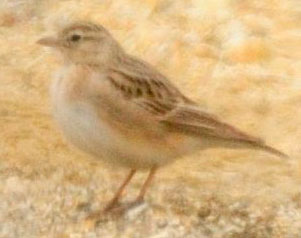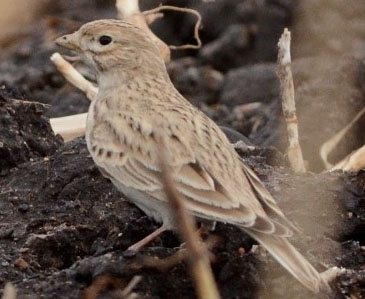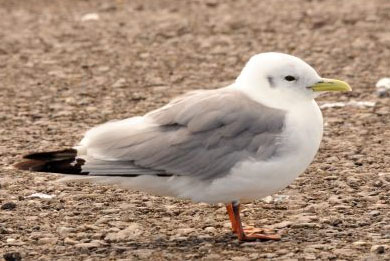
Okhotsk Chapter
of the Wild Bird Society of Japan
![Siberian Rubythroat / Nogoma [photo: A.S.] nogoma](images/120624nogoma130h.jpg)
| Home | Events | Reports | Sightings | Checklist | Bird Guide |
| Birding Info | J Bird Names | References | Links | About Us | Contact Us |
| Unusual Sightings | Back to Sightings Top | ||||
 |
Greater Short-toed Lark (Hime-koutenshi; Calandrella brachydactyla) 5 May 2013, Shibunotsunai Lake (east of Komuke Lake), found and photographed by Kaito-san. This is the first time for this bird to be found in the Okhotsk region, though not a first for Hokkaido, and it has been added to our Checklist. Its status in Hokkaido is given as Accidental Visitor by the OSJ, and is indeed AV in the rest of Japan as well. According to OSJ (2012) this bird in Japan is a subspecies, C. b. longipennis, that "Breeds from the Ukraine, n Caucasus, Iran to Transbaikalia and Manchuria. Winters mainly to Afghanistan, Pakistan, and nw India; casual in Sakhalin, Korea, and Japan." Brazil (2009): "Habitat & habits: Open steppe with sparse vegetation; visits agricultural fields." |
 |
Asian Short-toed Lark (Ko-hibari; Calandrella cheleensis) 28 November 2013, Hama-koshimizu area, found and photographed by Kanrinin-san. It is remarkable that two different short-toed larks, both sighted for the first time in the Okhotsk region of Hokkaido, were sighted within just a few months of each other. Its status in Hokkaido is given as Accidental Visitor by the OSJ (2012), same as the Greater Short-toed Lark, and is AV in the rest of Japan as well. According to OSJ, this bird in Japan is a subspecies, C. c. cheleensis, that "Breeds in ne Mongolia, Transbaikalia, and Manchuria. Winters to s Manchuria and n China; casual in Japan." Brazil (2009): "Habitat & habits: Dry steppe or dry agricultural land."
|
 |
Black-legged Kittiwake (Mitsuyubi-kamome; Rissa tridactyla) 27 October 2013, Garinko port area in Mombetsu, found and photographed by Kaito-san. Since the bird in this photo has reddish legs, there was a debate about whether it was a Red-legged Kittiwake or a Black-legged one. According to Kanrinin, compared to the Red-legged, this one has "longer legs, longer bill, gentler-sloping forehead, smaller-looking eyes, paler grey upper wings, and it is thus a Black-legged Kittiwake." Both Brazil (2009) and "The Wild Birds of Hokkaido" (2012; of which Kanrinin is one of the authors) convey that individuals with "orange-red" legs are rare but do exist. This bird in Hokkaido is a subspecies, R. t. pollicaris, that is a Winter Visitor (OSJ, 2012) and also called a Pacific Kittiwake (Brazil, 2009). |
A Year in the Life of Okhotsk Bird Sightings (April 2013 - March 2014) also contains records of sightings and photos of birds in the region during most of 2013.